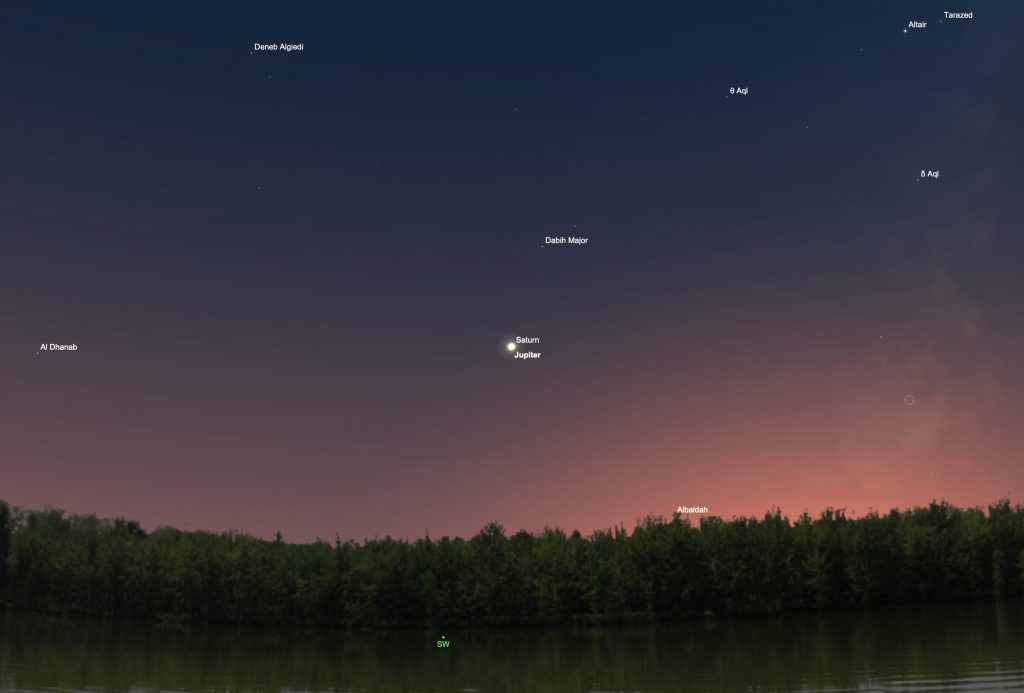Jupiter-Saturn Great Conjunction: When and How to Watch the Celestial Event in India

A rare celestial treat awaits stargazers the world over as two of our solar system’s largest planets, Jupiter and Saturn, will look like double planet just after sunset on the evening of December 21, the beginning of the winter solstice.
This is the first time the two gas giants will appear this closer to each other in nearly 800 years.
Interestingly, it is the second closest conjunction of the two giants since the invention of the telescope in 1609. On July 16, 1623, the two planets came close to each other.
When to watch the Jupiter-Saturn Great Conjunction:
People all over the world will be able to witness the great celestial spectacle, barring unfavourable weather conditions. The two planets were visible in the evening sky approaching each other for around two weeks. They will finally cross paths on December 21 after sunset. At the closest point, they would be separated by just 0.1 degrees. The planets could then be seen moving away from each other for the next few days.
The great conjunction will be visible an hour after sunset in the southwestern sky. In India, it is expected to show between 6:30 pm and 7:30 pm.
How to watch the Jupiter-Saturn Great Conjunction:
To view the conjunction, one must find themselves an unobstructed view of the sky like a terrace or a park or an open field.
Thanks to the brightness of the planets they would be visible even in the not so clear sky of big cities. Jupiter would appear brighter, while Saturn would appear slightly fainter, positioned slightly above and to the left until the conjunction.
One can view the conjunction with the naked eye. But using binoculars or a telescope would enable one to see the four orbiting moons of Jupiter.
The Jawaharlal Nehru Planetarium in Delhi has arranged viewing of the celestial event for the public based on registrations. The skywatch event started on December 20 and will go on till December 22, allowing people to witness the conjunction while adhering to social distancing and other COVID-19 norms. The spectacle will also be broadcast online.
The Jawaharlal Nehru Planetarium in Bengaluru will also live stream the great conjunction on its Facebook and YouTube pages, providing the weather is favourable.
The conjunction also coincides with the longest day (December 21) in the year as the sun reaches a point where it appears to shine farthest to the south of equator over the Tropic of Capricorn, marking the start of the winter solstice.
Ankit Anand
Indian Media “The Fourth Pillar” has been subsumed by Politics.

